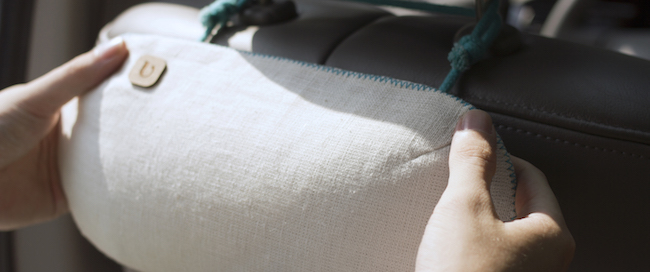Joint venture, also known as strategic partnership or co-branding, is one of the best ways to grow your consumer good (hardware, physical product, widget) business. Why? Because when done it’s right, it’s a win-win-win situation that gives you access to thousands, if not millions of new customers without spending a dime on advertising. Here are the fundamentals and several case studies to set you on the right path.
Why Joint Venture?
As a startup or new consumer brand looking at the competitive landscape, you have a number of ways to grow your business.
Advertising
Whether online or offline, advertising can lead to quick traffic and sales. But it’s expensive and unless you’ve got deep pockets to work with, you’ll quickly burn through your cash.
SEO & Content Strategy
You can also use search engine optimization and great content to drive organic traffic to your ecommerce website. This is a fantastic long-term strategy, but you need sales now.
Go Retail
Getting your brand into retail stores can bring exposure to your products. But this strategy also has its own challenges. It can take a lot of time to battle your way through. There are also a plethora of requirements your business and product need to meet.
With joint venture / strategic partnership / co-branding, you can quickly get access to new customers without spending much money. You’ve got the advantages of speed, effectiveness, and low cost all rolled up together.
The Fundamentals of Joint Venture
Not Just About the Money
One of the biggest mistakes when you approach someone for a joint venture is thinking only about the money. Your widget might have great margins and a solid sales record, but if you’re trying to partner with a successful business, it’s likely they’ll have many potential partners to choose from — all of which will offer money. They don’t need you.
Money is a given. Just don’t make it the focus.
Get Noticed & Liked
Identify the decision makers and get them to notice and like you. How? By doing favors for them without asking for anything in return. Your goal isn’t necessarily to become friends with the decision makers. Your goal is to help them and add value. Figure out who they are and what they’re interested in through networking, events, Linkedin, and email. For example, you can comment on their work, send interesting articles over, and help them organize events.
People go into joint ventures with people they like.
Does It Enhance Customer Experience?
This is the most important question to ask yourself. Only pitch joint ventures if you honestly believe that your product will enhance the experience of your partners’ customers. Otherwise, just don’t bother. The last thing any reputable business wants to do is to harass its customers with unrelated and irrelevant products.
The case studies we will look at below will illustrate what “enhancing the experience” means.
Joint Venture Case Studies
PURGGO & Car Wash

PURGGO sells all-natural and eco-friendly car air fresheners made with bamboo charcoal. It makes sense to partner with car wash and car cleaning services, especially the eco-friendly ones. PURGGO gets access to new customers, and the car wash services offer a superior experience.
Enhance customer experience?
Absolutely! After a car wash, customers want the air inside their car to be clean as well.
Nuvango & Artists

Nuvango (formerly Gelaskin) sells smartphone and laptop cases and skins. They partnered with artists in 2006 to create unique designs on their products. This gave artists a new channel to sell art and ensured Nuvango has access to unique designs that can’t be found anywhere else.
Enhance customer experience?
Yes. Customers get access to unique designs on their products that they can’t find anywhere else.
Ford & Eddie Bauer

Ford (the car company) and Eddie Bauer (the clothing company) had partnered for over 20 years. Ford produced a series of SUVs that were limited Eddie Bauer editions.
Enhance customer experience?
You bet. The partnership enhances the perceived value of both brands and makes customers feel special for owning something limited.
Cold Stone Creamery & OREO

Cold Stone Creamery (the ice cream shop) and OREO (the cookie) worked together to create the “OREO Overload” flavor at the ice cream shop. Cold Stone benefits from having a popular flavor, and OREO extends its reach.
Enhance customer experience?
I’m salivating just thinking about it. People love Cold Stone ice cream, and people love OREO. Put them together and only magic can happen.
Pebble Smartwatch & Mercedes

Pebble and Mercedes integrated so that you can use your Pebble Smartwatch to view information such as fuel level, door lock status, and car location. This joint venture makes the Pebble Smartwatch more useful and makes Mercedes more innovative.
Enhance customer experience?
Yes. It provides useful information and makes owning both Pebble and Mercedes very cool. Customers feel like VIPs because no one else has access.
What’s Next?
Do you have great examples of joint venture for consumer brands? Let us know in the comment section below.
This article was syndicated from Business 2 Community: Joint Venture 101 for Consumer Brands
More Sales & Marketing articles from Business 2 Community:




